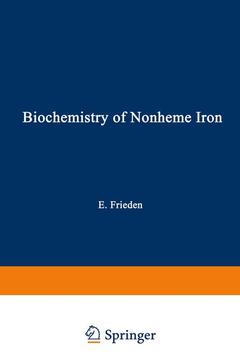Atomic biology has come of age. Interest in the role of chemical elements in life processes has captured the imagination of a wide spectrum of research scientists-ranging from the nutritionist to the biochemist, the inorganic chemist, and even to some biophysicists. This series, Biochemistry of the Elements, is a recognition of this increasing interest. When complete, the books will assemble the hard facts concerning the biochemistry of each element-singly or in a logical grouping. The series will provide a permanent reference for this active and growing field. Each volume shall represent an integrated effort by one or several authors to describe the current knowledge of an element(s) or the methods by which it is studied. Iron is the only element to which we have devoted two volumes, because its biological and chemical role is so versatile and complex. These two volumes will treat the two main structural categories of iron: heme and nonheme iron. In this volume on nonheme iron, the first in the series, Anatoly Bezkorovainy provides what we believe is the most comprehensive treatment of this important topic.




